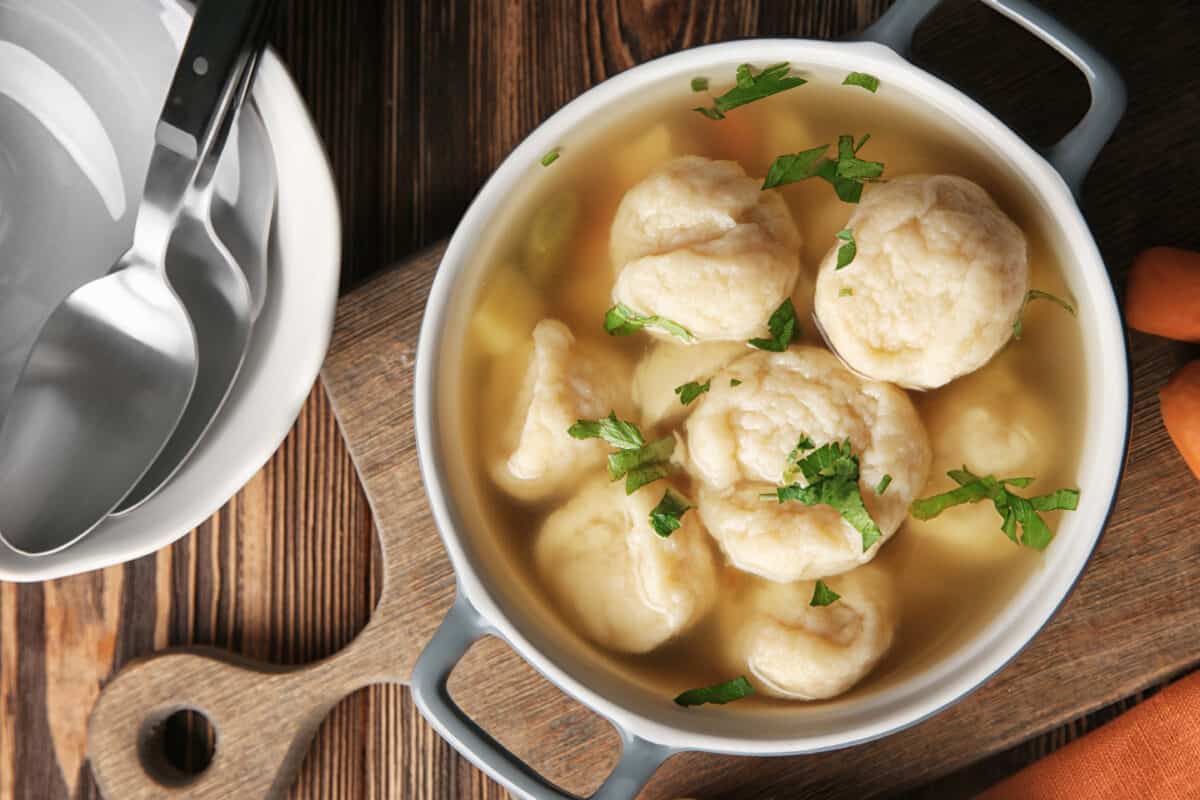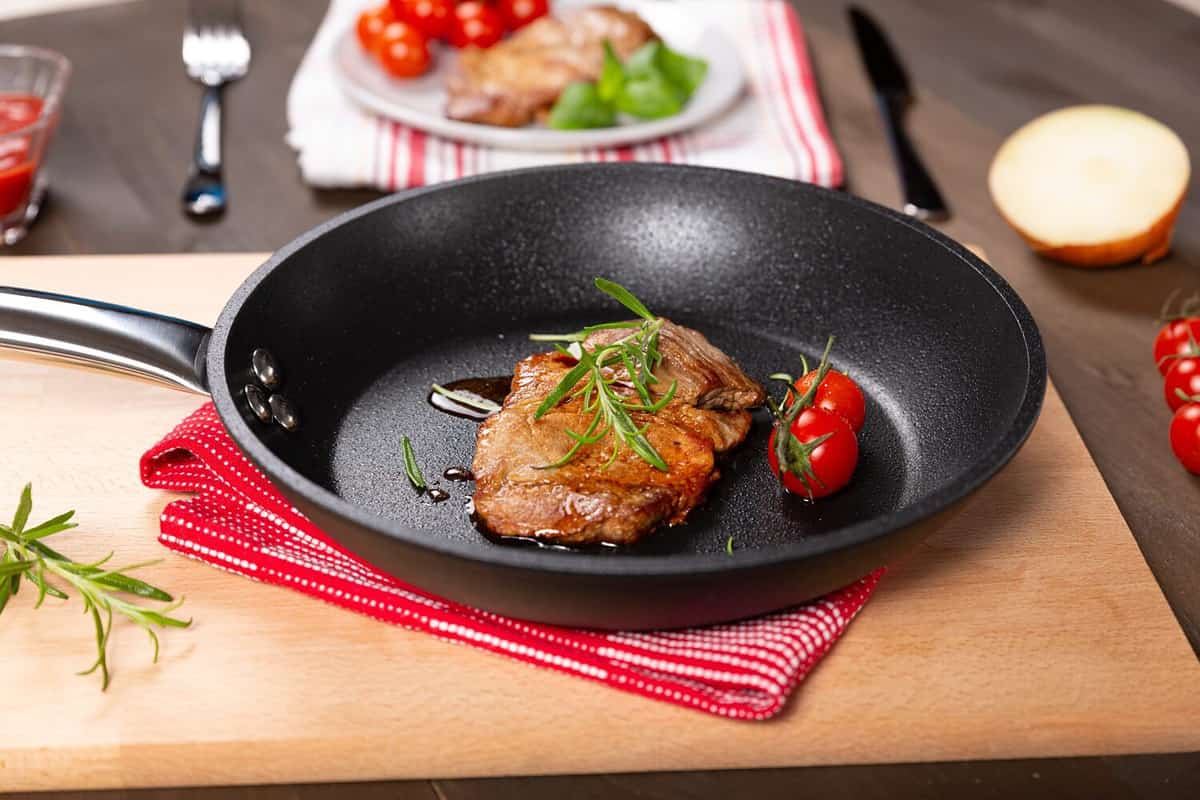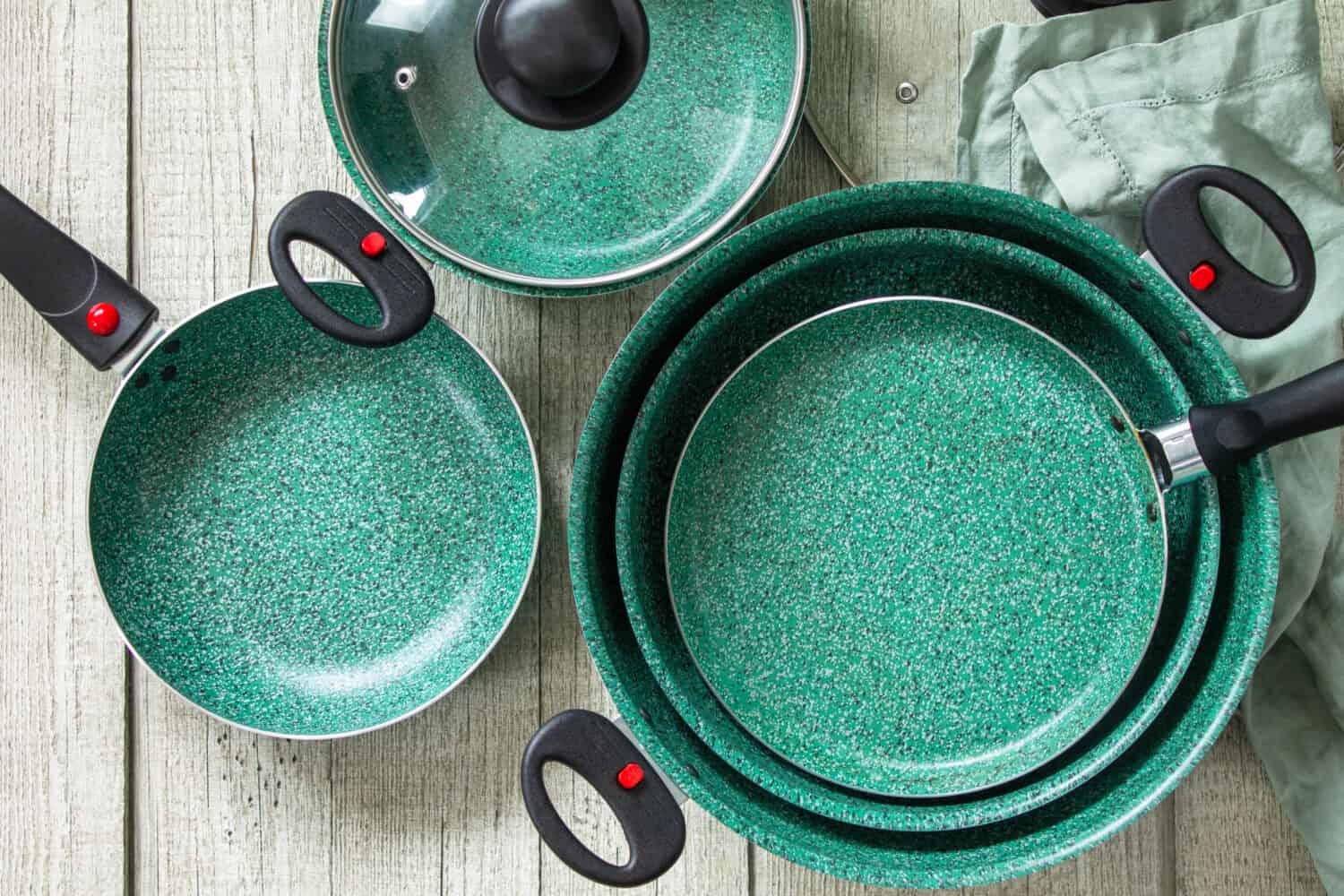While the quality of your cookware is likely something you consider before purchasing, convenience is also a factor. Many people choose nonstick cookware so they don’t have to constantly worry about food sticking to the pan. If you’ve looked into nonstick cookware, you may have wondered about the difference between nonstick vs. ceramic cookware.
The main difference between nonstick vs ceramic cookware is the type of coating as well as the cost. While ceramic cookware is typically aluminum or stainless steel coated in ceramic, nonstick is generally coating in a nonstick coating like Teflon. Ceramic cookware is more expensive but is also more durable than nonstick.
If you’re wondering which type of cookware is the best choice for you, keep reading to find out more about their differences.

©Africa Studio/Shutterstock.com
Nonstick vs. Ceramic: What Is the Difference?
One of the many factors to consider when looking into new cookware for your kitchen is convenience. Hands down, switching to nonstick cookware is one of the easiest ways to make life in the kitchen more convenient. Especially when it comes to cooking things like eggs or pancakes, nonstick coating can be a game changer.
When you think of nonstick cookware, what you’re likely picturing is aluminum or stainless steel cookware with a nonstick coating. However, you may have also compared the differences between ceramic and nonstick.
The main difference between these two types of cookware is the type of coating and the cost. While they are often both made of aluminum or stainless steel, ceramic cookware is coated in ceramic while nonstick generally has a Teflon coating.
The Teflon coating is not as durable as the ceramic coating, which typically leads to ceramic cookware being more expensive. Even if it costs a bit more, ceramic will last you longer if you take care of it properly. Teflon coating on nonstick cookware can last for several years or up to five years, but it also can peel or chip off over time.
Main Differences of Nonstick vs. Ceramic Cookware
Nonstick and ceramic cookware have quite a few things in common so you might wonder about the differences between them. When comparing nonstick and ceramic, here are some of the main differences:
- Nonstick coating contains synthetic materials
Safety is always going to be a factor to consider when it comes to choosing the right cookware for your kitchen. If synthetic materials are a concern, the Teflon coating on nonstick cookware may not be the best option for you. Although this coating is safe as long as you keep the temperature of the pan under 500 degrees, it can lead to toxic fumes if you overheat the pan. - Ceramic is often more durable
Both nonstick Teflon coating and ceramic coating will wear out over time, but ceramic is going to be more durable than Teflon coating. While ceramic coating can scratch, it’s not as prone to chipping or peeling off as Teflon coating is. - Ceramic cookware is more expensive
While ceramic coating is going to be more durable, it’s also more of an investment when it comes to the cost. Ceramic cookware is more expensive than nonstick. Many consider nonstick to be an affordable, simple, and easy type of cookware for beginners.
Both ceramic and nonstick cookware are efficient, convenient options. However, they do have several major differences for you to consider.
What Is Nonstick Cookware?
The most durable types of cookware are cast iron and stainless steel, but part of the problem is they’re not naturally nonstick. While you can create a nonstick surface by seasoning it, many people want the convenience of cookware that is naturally nonstick.
Nonstick cookware is aluminum or stainless steel with a nonstick coating. When you see nonstick in the name, the coating is generally Teflon. Teflon coating is an effective nonstick surface that can keep most materials or ingredients from sticking to your pan. It’s can also resist scratches or scarring. Additionally, Teflon has been around for nearly 70 years, and over time, Teflon coating has become safer and more effective.
The most significant benefit of using nonstick is how easy it is to cook with and clean. You don’t have to worry about your ingredients getting stuck to the pan and cleaning up after a meal is a breeze. Additionally, nonstick cookware is the most affordable type and is perfect for those who are just learning how to cook.
What Is Ceramic Cookware?
Like nonstick cookware, ceramic cookware usually contains aluminum or stainless steel. However, in this case, it has a ceramic coating instead of Teflon. Many people choose ceramic for the same reason as nonstick–it allows you to cook and clean up with ease.
The main benefit of ceramic cookware is the lack of synthetic ingredients like Teflon coating. Ceramic cookware is more of an investment than your typical nonstick pan or pot, but it’s also more durable in the long run. Both ceramic and Teflon-coated cookware are going to eventually break down over time.
No matter how well you take care of your kitchen tools, these types of nonstick skillets or pans aren’t going to last as long as cast iron or fully clad stainless steel but ceramic cookware is great for those who aren’t as skilled in the kitchen or want something low-maintenance.

©HordynskiPhotography/Shutterstock.com
Which Is Better for Healthy Cooking: Nonstick or Ceramic?
Health and safety are two of the most significant factors to consider when purchasing new kitchen tools. This is especially true when it comes to nonstick with a Teflon coating.
Prior to 2013, the process of making Teflon or nonstick coating included a compound known as PFOA. This chemical was used to make Teflon, but the EPA issued a health advisory in 2016 after studies showed it could be harmful. PFOA is found in numerous other products as well, but Teflon coating has been free of PFOA since 2013.
In most cases, cooking with Teflon is safe, unless you cook over 500 degrees. If you let the pan heat above 500 degrees, there is a risk of chemical fumes that can make you sick. At such a high temperature, the coating starts to break down, leading to anyone exposed having flu-like symptoms due to polymer fume fever.
If you follow basic safety practices in the kitchen, such as avoiding cooking at high temperatures and ventilating your kitchen, using Teflon is safe in most cases. However, if you’re concerned about using synthetic materials in your cooking, ceramic cookware can be a healthier and safer alternative. Ceramic cookware has similar nonstick properties to nonstick cookware but without the chemicals.
Choosing the Right Cookware: Nonstick vs. Ceramic
When it comes to choosing the right type of kitchen tools, a lot of it depends on your personal preferences and how you plan on using them. While nonstick can be incredibly inconvenient, it generally contains a Teflon coating, which raises concerns for some.
Even though Teflon is considered safe, if you’re looking for a healthier, more natural alternative, ceramic may be a better choice. While ceramic cookware can scratch more easily, Teflon or nonstick coating is more susceptible to peeling, chipping, or simply becoming less effective over time.
Ceramic cookware is going to cost more upfront than your typical nonstick cookware, but even though nonstick cookware is great for beginners, it’s the simplest and least durable type of cookware you can find. If you’re looking for something that’s stronger but not quite as much of an investment as fully clad stainless steel, ceramic cookware is the tool you’re looking for.
The image featured at the top of this post is ©Elena Hramova/Shutterstock.com.
